I am trying to figure out how to add a populated QVBoxLayout into a QFrame.

In the image you see 4 sliders, each with two labels, and a pushbutton. I've been messing around with QIcon and stylesheets which is why they look a bit odd at the moment. Each of these objects is created in my own custom class that produces all 4 objects together in a QVBoxLayout.
I would like to put a border around each QVBoxLayout. I've reeled through pages and pages of guides and other peoples code but i just can't work out what i'm doing wrong here. I've managed to create a QFrame with just a black border that is appearing behind the QVBoxLayout but its not tied to it in anyway, so its off-center. I could probably bodge something together using the geometery but that seems like something i'll regret later on.

You can see in the second image what i'm trying to get at, but everything i'm doing just isn't working. I've only just started learning to code, so i'm a bit out of my depth at the moment - i've read and read and read the QT documentation and hundreds of message board questions similar to this but none of it makes sense and none of it works.
Its going to be something very simple i know, but right now i'm ready to throw the computer out the window.
Here is my code - apologies as it is a bit messy as i've been experimenting with a lot of different things:
#!/usr/bin/env python3
import sys
from PySide2.QtWidgets import *
from PySide2.QtGui import *
from PySide2.QtCore import *
ON_BTN = 0
ON_PRESS_BTN = 1
OFF_BTN = 2
OFF_PRESS_BTN = 3
MUTE_ICONS = {
ON_BTN: "./images/onbtn.png",
ON_PRESS_BTN: "./images/onpressbtn",
OFF_BTN: "./images/offbtn.png",
OFF_PRESS_BTN: "./images/offpressbtn.png"
}
slider_enabled = """
QSlider::groove:vertical {
height: 300px;
width: 7px;
border-radius: 3px;
}
QSlider::handle:vertical {
background: #8d8d8d;
border: 2px solid #444;
height: 30px;
margin: 0 -30px; /* expand outside the groove */
border-radius: 10px;
}
QSlider::add-page:vertical {
background: #31b0c3;
border-radius: 3px;
}
QSlider::sub-page:vertical {
background: black;
border-radius: 3px;
}
QSlider::handle:vertical:pressed {
background: #565656;
}"""
slider_disabled = """
QSlider::groove:vertical {
height: 300px;
width: 7px;
border-radius: 3px;
}
QSlider::handle:vertical {
background: #8d8d8d;
border: 2px solid #444;
height: 30px;
margin: 0 -30px; /* expand outside the groove */
border-radius: 10px;
}
QSlider::add-page:vertical {
background: #3d6166;
border-radius: 3px;
}
QSlider::sub-page:vertical {
background: black;
border-radius: 3px;
}
QSlider::handle:vertical:pressed {
background: #565656;
}"""
class StyleSheets():
def __init__(self, style):
self.style = style
def sliderstyle(self):
self.style.setStyleSheet
class MySlider(QWidget):
def __init__(self, number):
#Defining various items that make up the object
QWidget.__init__(self)
self.number = number #Channel number
#Slider creation and functions that set its value called
self.slider = QSlider(Qt.Vertical)
self.slider.setMaximum(100)
self.send_slider_startup_values()
self.slider.valueChanged.connect(self.slider_value_change)
self.slider.setFixedHeight(300)
self.slider.setFixedWidth(80)
self.setStyleSheet("background: white;")
self.MyStylesheet = """
QSlider::groove:vertical {
height: 300px;
width: 7px;
border-radius: 3px;
}
QSlider::handle:vertical {
background: #8d8d8d;
border: 2px solid #444;
height: 30px;
margin: 0 -30px; /* expand outside the groove */
border-radius: 10px;
}
QSlider::add-page:vertical {
background: #00ddff;
border-radius: 3px;
}
QSlider::sub-page:vertical {
background: black;
border-radius: 3px;
}
QSlider::handle:vertical:pressed {
background: #565656;
}
"""
self.slider.setStyleSheet(self.MyStylesheet)
#Defining the channel number label & volume level label
self.numberlabel = QLabel(str(number))
self.numberlabel.setAlignment(Qt.AlignCenter)
self.volumelabel = QLabel("0")
self.volumelabel.setAlignment(Qt.AlignCenter)
self.volumelabel.setStyleSheet("border-style: solid; border-color: rgba(0,50,100,255);")
#Creating the mute button
self.mutebutton = QPushButton()
#self.mutebutton.setAlignment(Qt.AlignCenter)
self.mutebutton.setFixedSize(QSize(int (77), int (45)))
self.mutebutton.setIconSize(QSize( int(80), int(48)))
self.mutebutton.setFlat(True)
self.mutebutton.pressed.connect(self.button_pressed)
self.mutebutton.released.connect(self.button_released)
self.update_status(OFF_BTN)
#Making the Layout and adding each item
self.sliderframe = QFrame(self)
self.sliderframe.setFixedHeight(450)
self.sliderframe.setFixedWidth(90)
self.sliderframe.setStyleSheet("border: 2px solid black; background: 0%;")
self.setGeometry(50, 50, 450, 90)
#sliderflayout = QVBoxLayout()
#sliderflayout.setAlignment(Qt.AlignCenter)
sliderlayout = QVBoxLayout()
sliderlayout.setAlignment(Qt.AlignCenter)
sliderlayout.addWidget(self.slider, 0, Qt.AlignCenter)
sliderlayout.addWidget(self.numberlabel, Qt.AlignCenter)
sliderlayout.addWidget(self.volumelabel, Qt.AlignCenter)
sliderlayout.addWidget(self.mutebutton, Qt.AlignCenter)
#sliderlayout.addWidget(self.sliderframe, Qt.AlignCenter)
#self.sliderframe = QFrame(sliderlayout)
#self.sliderframe.setFixedHeight(450)
#self.sliderframe.setFixedWidth(100)
#self.sliderframe.setStyleSheet("border: 5px solid black;")
#self.setGeometry(50, 50, 50, 50)
# self.sliderframe.setVisible(False)
self.setLayout(sliderlayout)
#self.setAutoFillBackground(True)
def slider_value_change(self):
value = int(self.slider.value() / 10)
self.volumelabel.setText(str(value))
def send_slider_startup_values(self):
self.slider.setValue(0)
def update_status(self, status):
self.status = status
self.mutebutton.setIcon(QIcon(MUTE_ICONS[self.status]))
def button_pressed(self):
if self.status == ON_BTN:
self.update_status(ON_PRESS_BTN)
elif self.status == OFF_BTN:
self.update_status(OFF_PRESS_BTN)
def button_released(self):
if self.status == ON_PRESS_BTN:
self.send_mute()
self.slider.setStyleSheet(slider_disabled)
self.update_status(OFF_BTN)
elif self.status == OFF_PRESS_BTN:
self.send_mute()
self.slider.setStyleSheet(slider_enabled)
self.update_status(ON_BTN)
def send_mute(self):
pass
class Window2(QWidget):
def __init__(self):
QWidget.__init__(self)
self.setWindowTitle("Hello")
self.setMinimumHeight(480)
self.setMinimumWidth(800)
self.setAutoFillBackground(True)
self.setStyleSheet("""QWidget{background-color: grey;}""")
self.labeltest = QLabel("test")
label = QLabel("Test 1")
label2 = QLabel("Test 2")
label3 = QLabel("Test 3")
label4 = QLabel("Test 4")
label5 = QLabel("Test 5")
radiobutton = QRadioButton("MUTE")
radiobutton.setText("hello")
#self.label5 = QLabel("HELLO!!!!!")
#frame = QFrame()
#frame.setLayout(QVBoxLayout)
self.channel1 = MySlider(1)
self.channel2 = MySlider(2)
self.channel3 = MySlider(3)
self.channel4 = MySlider(4)
#self.sliderframe = QFrame(self.channel1)
#self.sliderframe.setFixedHeight(500)
#self.sliderframe.setFixedWidth(150)
#self.sliderframe.setStyleSheet("border: 2px solid black; background: 0%;")
self.channel2.setDisabled(True)
layout = QHBoxLayout()
layout.setAlignment(Qt.AlignLeft)
layout.addWidget(self.channel1)
layout.addWidget(self.channel2)
layout.addWidget(self.channel3)
layout.addWidget(self.channel4)
self.setLayout(layout)
def password_timeout(self):
pass
#def frame_object(self, channel):
#frame = QFrame()
#frame.setStyleSheet("""
#QFrame::active: {
# background: white;
#}""")
#channelstrip = MySlider(channel)
#frame.setLayout(channelstrip)
#return frame
class PasswordWindow(QWidget):
def __init__(self):
QWidget.__init__(self)
self.setWindowTitle("Password Test")
self.showFullScreen()
layout = QGridLayout()
self.setLayout(layout)
label = QLabel("Please enter password: ")
layout.addWidget(label, 0, 0)
button = QPushButton("Press me!")
button.clicked.connect(self.button_pushed)
layout.addWidget(button, 1, 0)
def button_pushed(self):
self.close()
app = QApplication(sys.argv)
mainwindow = Window2()
mainwindow.show()
sys.exit(app.exec_())
EDIT: Slight update, i've managed to frame the object by creating a seperate class that inherits Qframe and has the MySlider object passed into it. I need to find a way to get it tighter around the objects but its progress somewhat.

